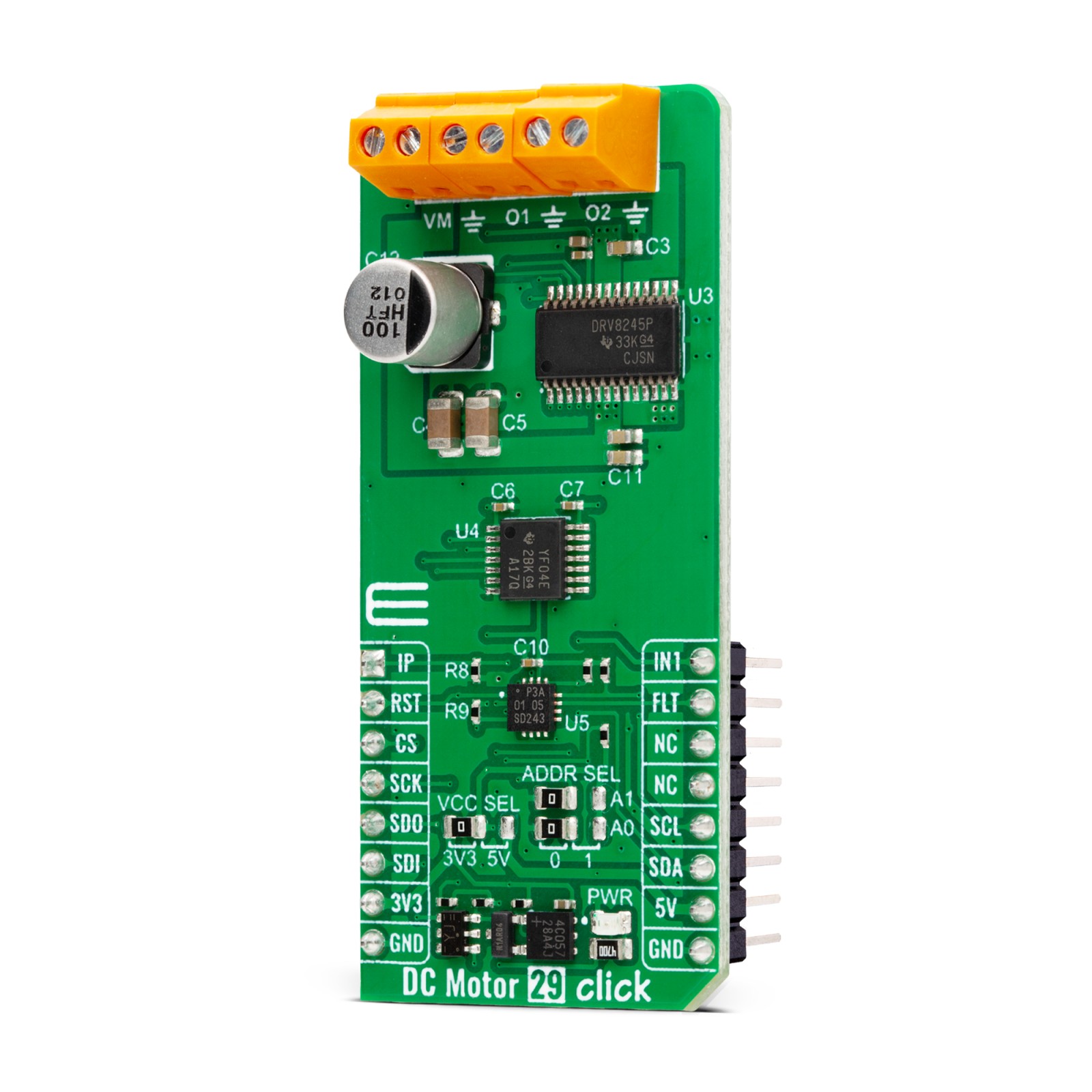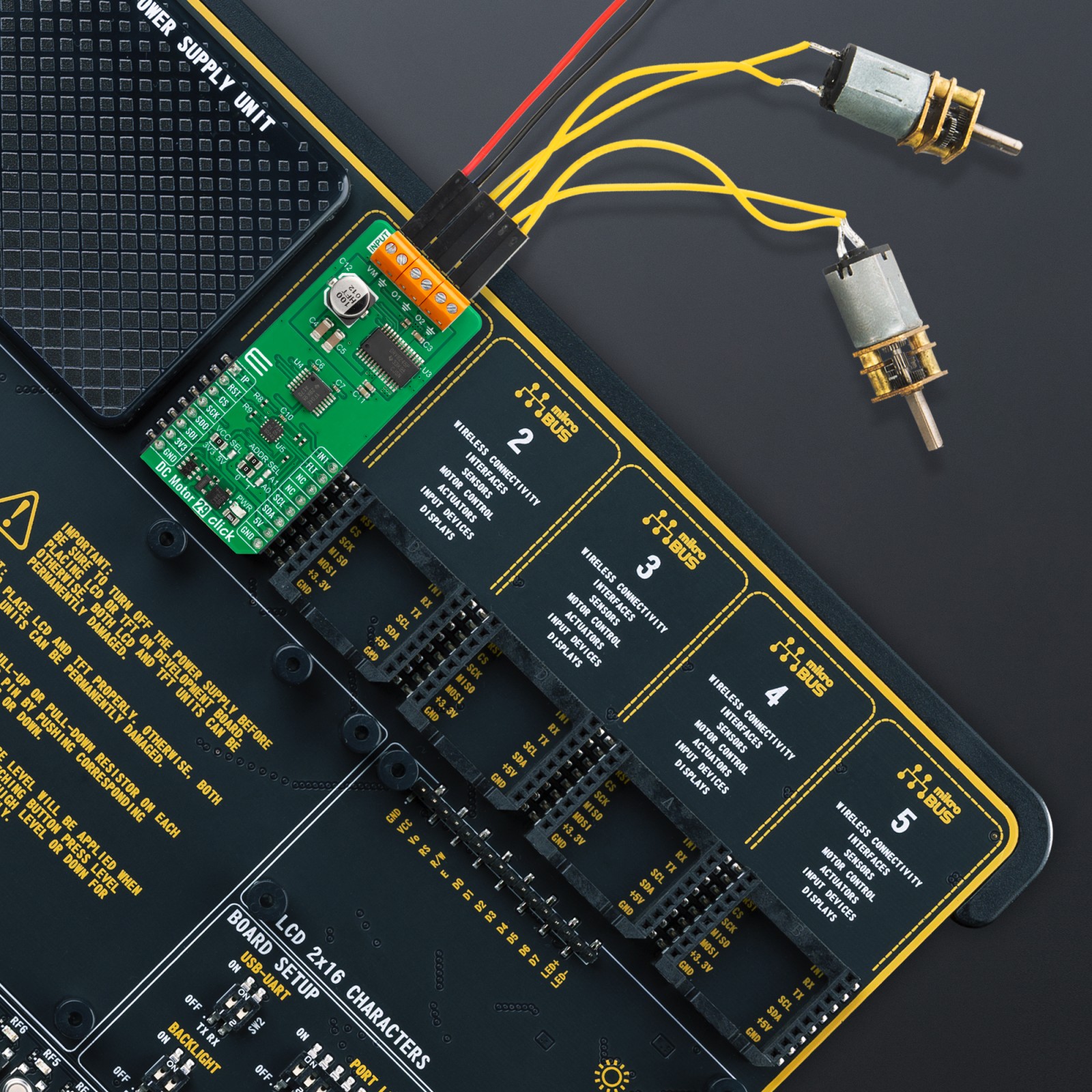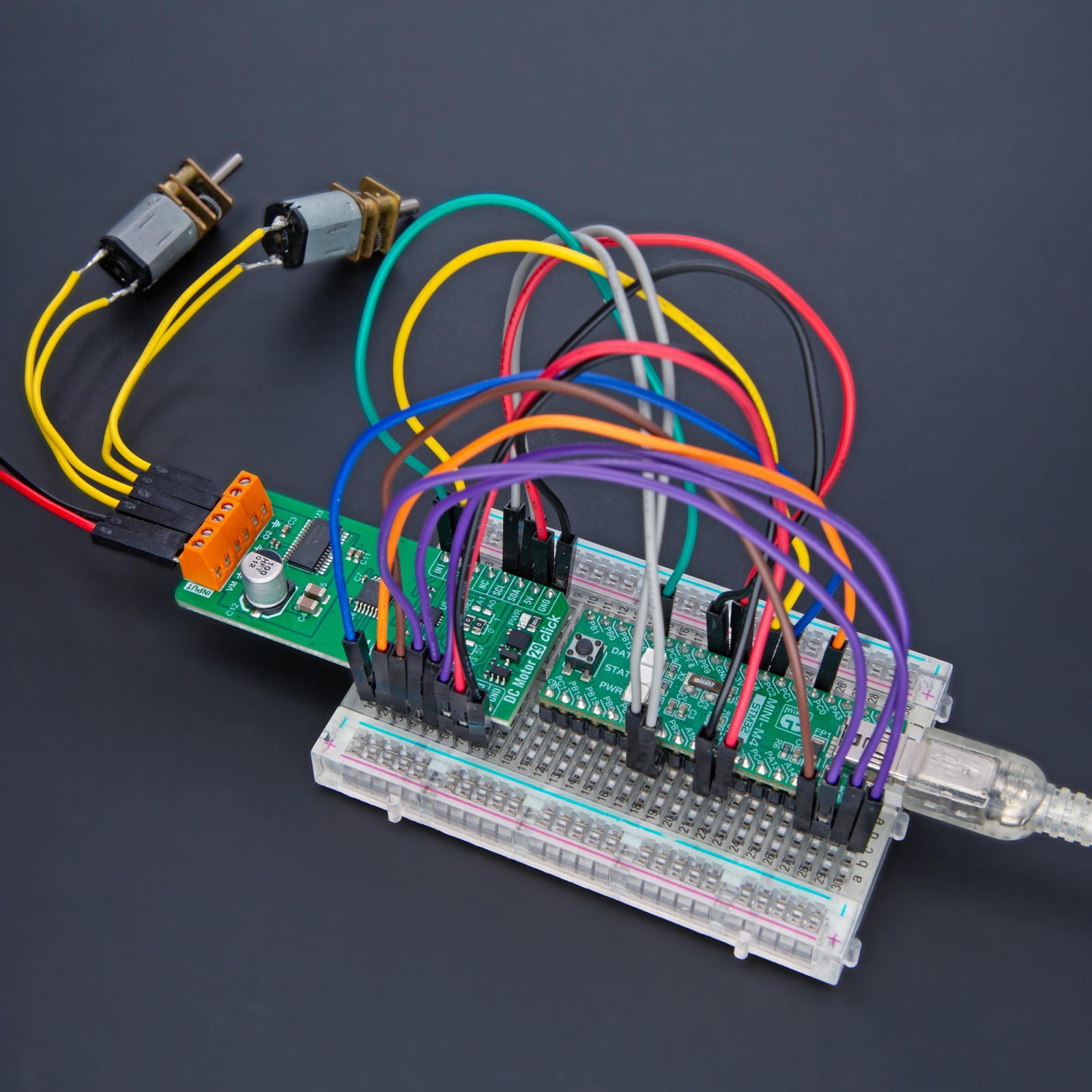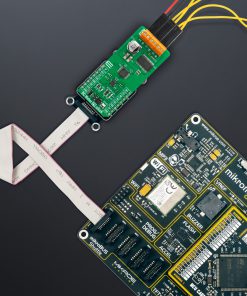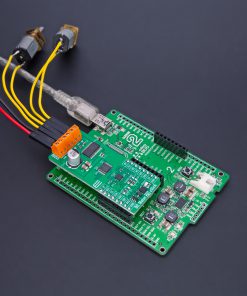DC Motor 29 Click
R775.00 ex. VAT
DC Motor 29 Click is a compact add-on board that contains a high-performance DC motor driver. This board features the DRV8245P, an automotive H-Bridge driver with integrated current sense and diagnostic from Texas Instruments. It can be configured as a single full-bridge driver or independent half-bridge driver. The driver offers excellent power handling and thermal capability due to a BiCMOS high power process technology mode, in which it is designed. This Click board™ makes the perfect solution for the development of automotive brushed DC motors, solenoids, door modules, wiper motors, body control modules, steering systems, gas engine systems, and more.
DC Motor 29 Click is fully compatible with the mikroBUS™ socket and can be used on any host system supporting the mikroBUS™ standard. It comes with the mikroSDK open-source libraries, offering unparalleled flexibility for evaluation and customization. What sets this Click board™ apart is the groundbreaking ClickID feature, enabling your host system to seamlessly and automatically detect and identify this add-on board.
Stock: Lead-time applicable.
| 5+ | R736.25 |
| 10+ | R697.50 |
| 15+ | R658.75 |
| 20+ | R633.95 |


